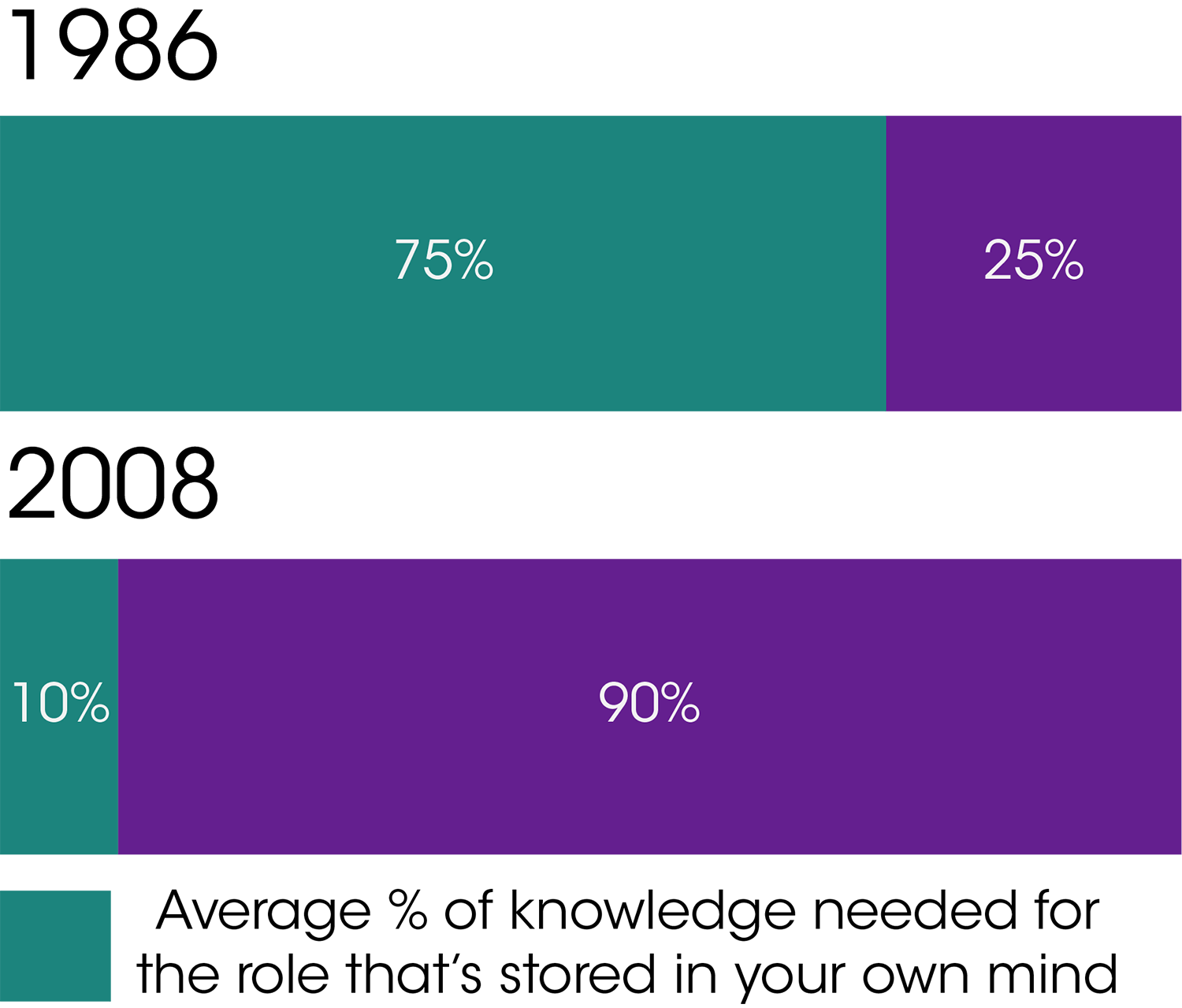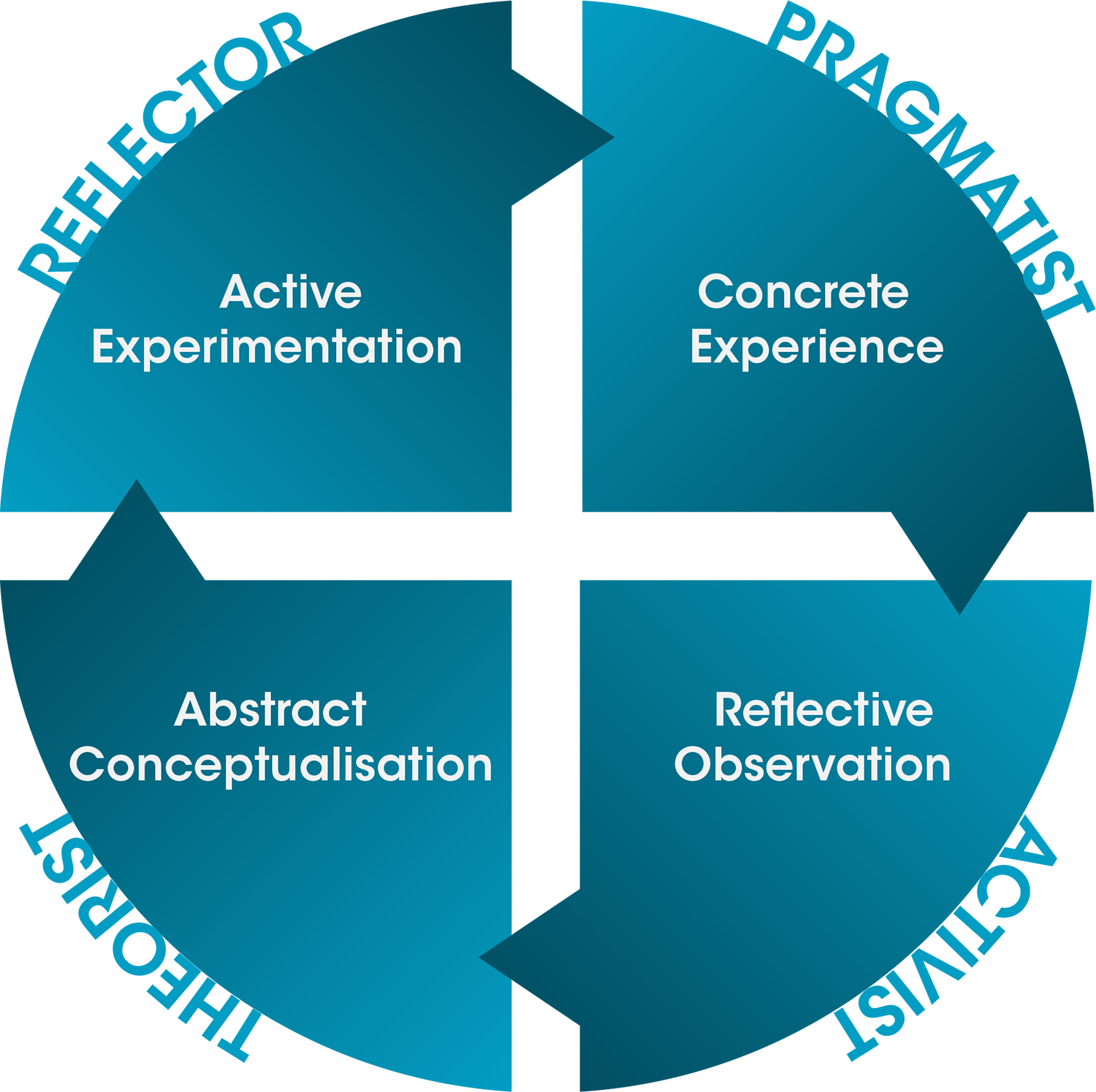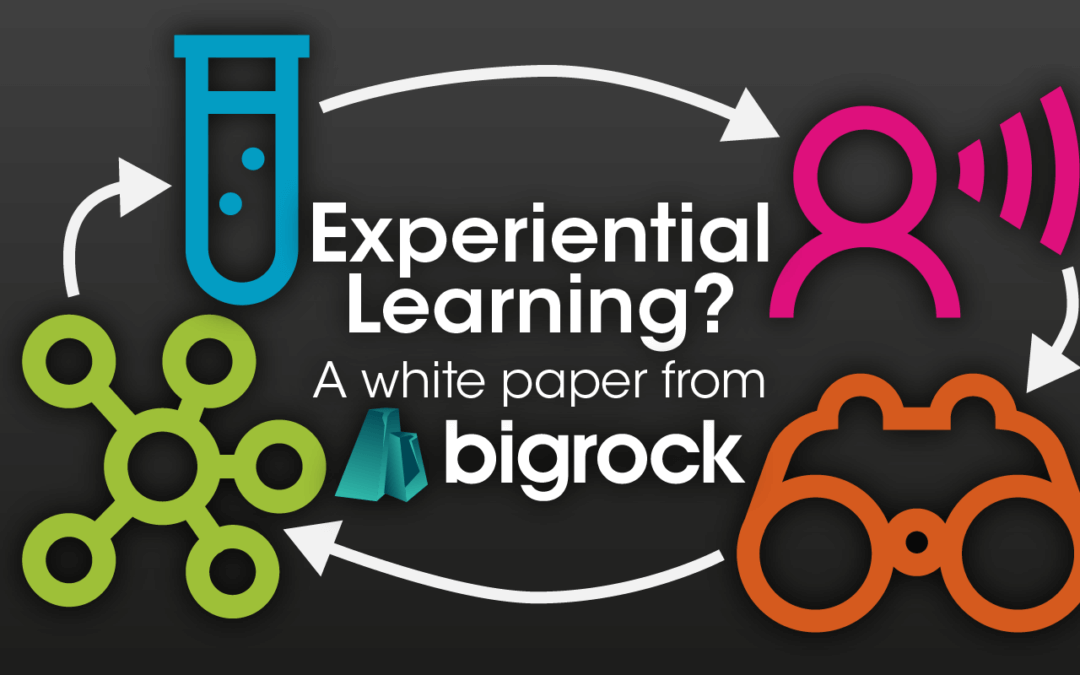Contents
“Experiential Learning takes place when a person involved in an activity looks back and evaluates it, determines what was useful… and uses this information to perform another activity.”
“Tell me, and I will forget. Show me, and I may remember. Involve me, and I will understand.”
“Whatever we learn to do, we learn by actually doing it; men come to be builders, for instance, by building, and harp players by playing the harp. In the same way, by doing ‘just’ acts we come to be just; by doing… brave acts, we become brave.”
1) Introduction
Experiential learning is not a new idea. People have learnt through experience from the beginning of time. It is at least as old as learning from others and certainly pre-dates learning from books and other written resources. Whilst, Experiential Learning Theory was developed by David A. Kolb and Ron Fry in the 1970s, their scholarship drew on previous studies and some of the basic principles can be traced back to the likes of Confucius and Aristotle.
Despite this pedigree, experiential learning has previously been seen as an ‘alternative’ option in corporate learning and development. Many business leaders and trainers have questioned how people could learn their profession through experiential learning. As an industry, we have long viewed training as the ‘transfer of knowledge and the development of skills’. Experiential learning was (perhaps rightly) considered less effective for the transfer of knowledge. However, with the rise of the digital age, transfer of knowledge is less important and the development of skills is ever more so.
Computers are infinitely better at storing and remembering factual information than people. In the age of search engines, why learn a fact when you can just ‘google it’? Why commit detailed product knowledge to memory, when you can access specifications at a touch of a button?
People, on the other hand, can make connections, think creatively and judge situations in a way that computers can’t. Man and machine work most effectively when we recognise these relative strengths and weaknesses.
The idea of using computers as a memory bank, whilst we focus on analysis, connecting the dots and making decisions, may seem futuristic. Yet, many of us already rely on technology to remember vast amounts of the daily knowledge we need. Just think of the information stored in your outlook diaries, phone contacts, etc.
Robert Kelley, at Carnegie-Mellon University, has surveyed several thousand knowledge workers over the past 20 years, asking “What percentage of the knowledge you need to do your job is stored in your own mind?” In 1986, the average percentage was 75%. In 2008, 10 years after the rise of the internet, that percentage dropped to 8-10%. This suggests that professionals no longer feel the need to gain knowledge to be successful in their role.

The Knowledge Shift: With the birth of the internet, job roles no longer require employees to store knowledge in their own minds.
Don’t have time to read the whole white paper right now?
No worries. Let us send you a copy so you can read it when it’s convenient for you. Just let me know where to send it (just takes 5 seconds).
Instead, increasingly we are seeing that leading organisations are looking for training options that develop employees’ mindset, practical skills and ‘phronesis’ or practical wisdom, i.e. the ability to discern when, how or why to act.
In other words, organisations are now looking to develop their people in those areas where it is more complicated than a simple search.
Developing people is no longer about transferring knowledge, but about developing the mindset, structure and skills to enable success. These new areas of focus lend themselves to experiential learning techniques. Knowledge transfer, where necessary, is often best delivered through digital learning options.

Combining the Strengths of Man and Machine: Don’t learn it, search for it when you need it.
The best firms are already making this shift. 2016 research by The Association for Talent Development and the Institute for Corporate Productivity has discovered that high-performing firms are now about three times more likely than lower performing firms to use experiential learning for both frontline and executive-level leadership development. Their research also indicated that whilst these high-performance firms are investing in designing and managing robust experiential leadership opportunities, lower performing firms are focusing entirely on traditional classroom and e-learning programmes.
2) What is Experiential Learning?
Experiential learning is the process of learning through experience; through doing and reflecting on a task. There are two types of development that people tend to put under the umbrella of ‘experiential learning’;
Learning on the job, where learning is a by-product of completing daily tasks.
Specifically created experiential activities, where learners are given practice scenarios, simulated tasks or ‘case study’ style problems to complete as part of a structured event or learning pathway.
Whilst organisations see great value from the first kind of experiential learning, it does lack structure, it is difficult to measure and has inherent risks – there are some things you would not want an untrained professional to attempt if they had no previous experience in the area.
Arguably, this form of experiential learning should be a constant by-product of our daily working lives. As long as an organisation has a culture where employees feel able to try new things, learn from their mistakes and expand their horizons, learning from our experiences at work should be a natural and ongoing part of working life.
The second style (specifically created experiential activities) aims to combine the benefits of traditional training (e.g. agreed objectives, a reflective atmosphere, measurable outcomes, etc.) with those of learning from experience. Activities are designed to enable learners to gain new skills and develop their capability through hands-on practice in low-risk environments.
However, for both types, there is more to experiential learning than simply attempting a task. A key element of experiential learning is reflection. After attempting a task, the learner must reflect on their approach and explore where they could improve.
3) Experiential Learning Theory (ELT)
The principal thinker in experiential learning is David A. Kolb. In Kolb’s own words, he aims “to create… a theory that helps explain how experience is transformed into learning and reliable knowledge.”
Kolb’s theories were grounded in the humanist concept that people have a natural capacity to learn. That given the right stimulus and opportunities, we will naturally be able to process our experiences into valuable learning.
Kolb (with Roger Fry) saw experiential learning as a continuous 4-stage cycle of:
- Concrete Experience – i.e. doing, trying something for yourself, having an experience.
- Reflective Observation – i.e. reflecting on your attempts and reviewing your experience.
- Abstract Conceptualisation – i.e. thinking about what you can conclude from your reflections and what might constitute the best approach (forming an abstract concept of best practice).
- Active Experimentation – testing your concept, your new approach. Trying out what you have learned.

The Experiential Learning Cycle: Kolb and Fry argued that experiential learning should be seen as a continuous 4-stage cycle.
Kolb and Fry postulated that the learner could begin this cycle at any point and that it should be seen as a continuous spiral. With each cycle, the learner refines and develops their approach, gaining more experience, greater understanding and greater levels of expertise. Learning is gradual and occurs as the learner makes small and incremental improvements with every cycle.
Experiential Learning Theory receives both praise and criticism from scholars and practitioners alike. Advocates point to experiential learning’s practical significance and the inspirational power of enabling learners to discover what works for themselves. Critics challenge the way Kolb emphasises individual experience over other cultural, social and conceptual aspects of learning. For example, the cycle ignores the value of sharing knowledge or learning from others.
In the next section, we explore some of the strengths and weaknesses of experiential learning, when compared with more traditional approaches to workplace training and coaching.
4) Experiential Learning vs Conventional Training
Experiential learning theory differs greatly to more traditional training models. As an example, take the PESOS coaching model of: Prepare, Explain, Show, Observe and Supervise. Here the focus is on the trainer’s actions rather than the learner’s experience. In experiential learning, the entire process is centred on the learner and the model does not even mention a trainer or coach. The presumption is that the learner will be able to learn on their own. By contrast, in the PESOS model, learning cannot take place without a trainer. The trainer introduces, explains and demonstrates a concept, before the learner has a go themselves. Even then, the trainer is playing a direct role observing, supervising and giving feedback.
Much like good consultative selling, where the conversation is driven by the buyer’s need and objectives rather than the seller’s products, experiential learning is driven by the learner’s experience and ideas, rather than the trainer’s models or the organisation’s objectives.

Traditional Training Model PESOS: Traditional training approaches lead with explanation, models and theory.
There are advantages and disadvantages to both approaches. Below we list some of the positives and negatives of both options.
- Experiential Learning throws learners in at the deep end by immediately challenging them to try out a new task with little guidance. If learners lack confidence, are in the wrong mindset, or simply don’t know where to start, this approach may put them off a subject. If the first experiential cycle doesn’t result in a good outcome, learners may struggle to refine their approach. By first explaining and showing the learner what best practice looks likes, traditional training sets the learner up to succeed when they do have a go themselves.
- Experiential Learning presumes there is time for learners to make mistakes and repeatedly try again. While most of us will have experienced the exhilaration of discovering something for ourselves and can see the value and benefits of learning through experience, many businesses will not have the time to allow each employee to discover how to do tasks for themselves. Especially if an effective way of working has already been refined by their predecessors. Plus, if employees are trialling new approaches in role, in real client meetings, then this will have significant compliance and commercial risks. In many instances, organisations need new employees to draw on the experience and approaches of those who have gone before them.
- Experiential Learning can result in different outcomes. If every employee develops their own approach through experience, it is highly likely that this will result in several ways of approaching a single task. People’s different leaning styles, different ways of working, different strengths and preferences will mean that what one learner concludes may be different from another. People may take different messages from a single experience. If you are looking for all employees to learn and apply a consistent process, then a pure experiential approach is probably not the best option. However, an adapted experiential learning approach can be used if, after their experimentation, employees have the opportunity to define, codify and agree an approach to take forward and apply.
- Experiential Learning enables learners to discover their own approach and contribute ideas. Rather than simply believing that this is the best approach because an expert said so, experiential activities give learners the opportunity to try techniques and create an approach that works for them. This can be hugely empowering… if the pitfalls outlined above are avoided. Where employees develop their own strategy, they are often more invested in its success, more inspired to drive it forward and feel a greater sense of accomplishment when their approach achieves success.
- Experiential Learning allows people to grow and develop as individuals. By giving people the freedom to develop through experience and reflection, it is easier to focus on the strengths of each individual, rather than transferring ‘one size fits all’ capabilities. Experiential learning helps people develop their confidence, self-esteem and feel more fulfilled in their role.
- Experiential learning focuses on what the learner needs to do to ‘really do it’, whereas conventional training can be more theoretical. Conventional training, especially when the opportunity for learners to practise is totally removed, can leave learners with an understanding of the theory but with little understanding of how to apply this in practice. Following an experiential learning activity, team members know that they can apply a new approach in role because they have already applied it in a realistic scenario.
Business leaders and training professionals should consider what they are trying to achieve and the preferences of their learners before choosing either approach. A blend of both is often very effective, where expert facilitators offer suggestions and recommend best practice models to shape learners thinking as they move through the experiential learning cycle.
5) Tips for Facilitating Experiential Learning
The aim of experiential learning is to close the gap between training and real life experience. As discussed above, experiential learning involves learners working things through for themselves and developing their own understanding, instead of being told what constitutes best practice. As such, a facilitator is not a prerequisite of experiential learning, but can add substantial value by providing learning opportunities and helping learners make the best use of them.
A facilitator can aid experiential learning by;
- Creating the right environment for the experiential learning process. Aim to create a safe environment where learners feel able to try new things, voice ideas, make mistakes and learn. This may mean arranging an offsite event. Or you could choose to do an out of hours workshop in a branch, so that learning can take place in a customer free but realistic setting.
- Help learners get in the right mindset for experiential learning. If learners are expecting a more conventional training day, an experiential activity may throw them. Make sure learners understand that the aim is to learn from experience and that they are not expected to get it right first time. Encourage a positive environment where both introverts and extroverts are encouraged to participate in a way they feel comfortable with.
- Provide a realistic and relevant activity to initiate learning. Experiential learning is built around practice. Where, for conventional training, you may need to design a slide deck or learners’ workbook, for experiential learning you need to provide learners with a realistic way to attempt the skill or task they are learning or to tackle the challenge they are trying to overcome. Ideally, this should be more than a roleplay. Create a relevant case study or use a real scenario from a recent client challenge or request. Explain that learners should not just ‘go through the motions’ but actually attempt to do the activity as if it were a real day to day task.
- Create an atmosphere and framework that is conducive to critical review. Ensure all learners involved are open to giving and receiving feedback. Challenge learners’ thinking and help them develop their understanding of what works, what doesn’t and why. Building on Kolb’s model, experts Jacobson and Ruddy suggest facilitators can help learners by asking:
- Did you notice…?
- Why did that happen?
- Does that happen in life (in your role)?
- Why does that happen?
- How can you use that?
- Ensure learners’ reflections and discussions develop in to meaningful conclusions and an agreed new approach. One way a facilitator can really add value to a team’s experiential learning experience is by helping individuals agree key learns, conclusions and a way forward that works for all. As mentioned above, one of the disadvantages to experiential learning, when considered from an organisational perspective, is that it can result in multiple outcomes and ways of working. A good facilitator can help teams reach a collective agreement about what works best for all and agree a model or process that all can implement.
- Provide further opportunities for learners to practise and refine their new approach. Having experienced, reflected and agreed best practice, it is crucial the cycle continues and learners have the opportunity to practise their new model and refine it even further. This could be a final, more complex, scenario based activity. It could be a validation test. As learners continue the upward spiral and orbit round the experiential learning cycle for the 3rd or 4th time, active experimentation may take place in their day to day role. For example, after practising and reflecting on a new sales process in a few de-risked activities, the next step is to try the process for real in a client meeting. Ensure learners are given support to continue to review and develop their approach after each practice. Coaching and peer to peer mentoring can help support this process in role.
6) Digital Experiential Learning
Can experiential learning be digital? Are they not polar opposites? How can you experience something from a digital screen? These are common questions. Yet, experiential learning actually finds a natural ally in digital technologies.
Take video games. Very few video games begin with detailed instructions. You learn how to play most games by playing them. You learn where to go, how to get to the next level, where the enemy is, by experimenting, making mistakes and trying a new tactic. Where instructions are given, they are integrated in to the story. Most games begin with easier challenges or levels that help you work out how it works, before moving on to longer more difficult scenarios.
The advantage of this is that it is completely risk free. If you fail in the game, you simply go back to the beginning of the level. With gamified learning and virtual reality, these principles can be applied far more broadly. In his TED talk, Michael Bodekaer explores how such technologies could revolutionise the teaching of science in schools. Virtual reality removes the risks of conducting dangerous experiments and enables students to try the latest expensive equipment. As Bodekear points out, using digital simulations as an entry point to high risk normal tasks is not that new. Digital flight simulators have been used to train pilots for many years.
Good digital simulations provide an engaging learning environment, where the learner is fully in control and can learn at their own pace. Simulations can be accessed at any time to suit the learner’s schedule and can be reused for further practice and refinement as many times as needed. Once designed and created, one scenario can be used by multiple learners, across the globe. A significant problem in training is that far too many hours are spent developing great workshops that reach far too few learners. In contrast, once created, digital simulations can be reused anytime, anywhere and can be improved and modified over time.
When considering digital simulations, business leaders and trainers should consider the audience and the overall benefits they will gain from a digital solution. Whilst some learners will thrive in a digital scenario, finding gamified experiences and virtual reality inspiring, others may find it uncomfortable or alien. Always remember your audience, and if introducing something new, take steps to help them embrace it.
For more on the benefits and challenges of digital and online learning solutions download our white paper on Online & Mobile Learning.
7) Will you try it?
So, will your next training programme utilise experiential learning techniques?
At Bigrock, we believe that there are many benefits to integrating experiential learning techniques in to corporate learning, at all levels.
Many learners, from the newest apprentice to the most experienced leader, gain inspiration and fulfilment from experiential learning activities. Experiential activities enable the learner to go on a journey of discovery where they draw their own conclusions and feel a real sense of ownership over the actions agreed and the skills they learn. When they come to apply new techniques in role, they are not the trainer’s techniques but their own techniques. They know they can work, as they have already tried them in realistic activities.
However, this highly individualised learning can be inefficient. Businesses have to balance individuals’ preferences with what is best for the organisation as a whole. Without consistent processes, many organisations would be thrown in to chaos. As such, in some cases it would be entirely inefficient to get each learner to develop their own approach. Plus, experiential techniques do not allow for learning from and building upon the wisdom of others.
Whilst all training programmes benefit from some experiential principles, we find that full experiential learning solutions are best for more experienced team members, who can utilise their past experiences and expertise when tackling the first experiential activities. We also believe that it is important to bring teams together to help them share expertise, experience and reflections and agree an approach that works for all.
8) Bigrock’s Approach to Experiential Learning
All Bigrock training is designed to meet our clients’ specific needs and requirements. We design and facilitate both experiential learning workshops and more conventional training. Ahead of any programme, we work with your business leaders and your internal training teams to agree which style would best suit your learners and help you achieve your objectives.
If you would like to discuss the options for experiential learning with one of our learning experts, please call +44 (0) 1280 820 780 or email enquiries@bigrockhq.com to arrange a consultation.
Subscribe below to receive our latest insights direct to your mailbox.
Bibliography
Beckam II, John M. and Watkins, Michael, ‘Bringing Life to Learning: Immersive Experiential Learning Simulations for Online and Blended Courses’, Journal of Asynchronous Learning Networks, Volume 16: Issue 5 (October, 2012), pp. 61-71.
Bodekaer, Michael, ‘This virtual lab will revolutionize science class’, TEDxCERN, Filmed Oct 2015, https://www.ted.com/talks/michael_bodekaer_this_virtual_lab_will_revolutionize_science_class#t-211870 (accessed 17th Feb 2017).
Forrest, Clare, ‘Kolb’s Learning Cycle’ Fenman/ TJ Article for Train the Trainer, (2005).
Ho, Maria, ‘New Research Shows Investing in Experiential Learning for Leaders Pays Off’ on Association for Talent Development: Learning & Development Blog, published 12th May 2016, https://www.td.org/Publications/Blogs/L-and-D-Blog/2016/05/New-Research-Shows-Investing-in-Experiential-Learning-for-Leaders-Pays-Off (Accessed 17th Feburary 2017).
Kayes, D. C. , ‘Experiential Learning and its Critics: Preserving the Role of Experience in Management Learning and Education’, Academy of Management Learning and Education, Vol 1: No. 2, pp. 137-149.
Kolb, David A., Experiential Learning: Experience as the Source of Learning and Development, Second Edition, (New Jersey, 2015).
Smith, M. K., ‘David A. Kolb on experiential learning’, The Encyclopaedia of Informal Education, http://infed.org/mobi/david-a-kolb-on-experiential-learning/ (Accessed 17th February 2017).
Thompson, Martin & Chapman, Alan, ‘Experiential learning: experience-based learning – guide to facilitating effective experiential learning activities’, Businessballs.com, http://www.businessballs.com/experiential_learning.htm (Accessed 17th February 2017).


